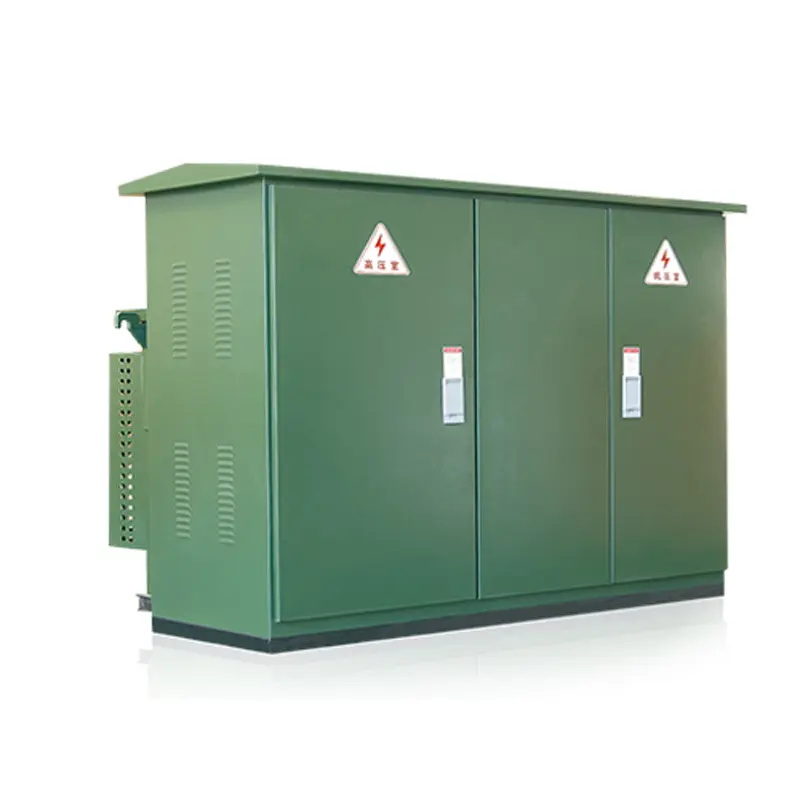Box-type substation is an essential infrastructure in power distribution system. They are primarily used to convert electricity from high voltage to low voltage, making it suitable for distribution to end users. As a compact and cost-effective solution, box-type substations have become more and more popular recently. In this blog, we will discuss in depth the main parameters of the box-type substation, the use environment and precautions when using it.
The use environment of box-type substation is the key to ensure its life and safety. The substation should be installed in a dry, well-ventilated location away from heat, moisture and corrosive chemicals. In addition, it is also important to ensure that substations are free of harmful gases and dust that could cause short circuits, fires or explosions. Regular maintenance is essential to keep your substation in good working order, such as cleaning, inspection, tightening screws and bolts, and replacing malfunctioning parts.
When using box-type substations, some precautions need to be taken to avoid accidents and system failures. One of these precautions is that only qualified and qualified personnel should operate substations according to safety regulations. Personnel should wear appropriate protective equipment to minimize the risk of electric shock and burns. Before using a substation, operators should heed the manufacturer's instructions, which detail how to safely open and close the substation. It is also important to ensure that incoming and outgoing wires are properly connected to avoid current overload and damage to substation components.
The main parameters of box-type substation determine its performance and applicability to different applications. Wiring form, transformer capacity and low-voltage cables are important parameters to consider. The wiring form determines the type and quantity of incoming lines that the substation can accommodate. For box-type substations, the wiring form can be one or two 10KV incoming lines, and the distribution network is flexible. The transformer capacity is determined by the expected load demand, and the capacity of a single transformer ranges from 500KVA to 800KVA. Finally, the low voltage cables determine the number of outlets that can be connected to the substation, usually 4 to 6.
In conclusion, box-type substation is an important part of power distribution system, which helps to convert electricity from high voltage to low voltage. The use environment and precautions of the substation are very important to ensure the safety and life of the substation. Finally, the main parameters of a substation, such as wiring form, transformer capacity and low-voltage cables, determine its suitability for different applications. Always ensure that the substation is operated by qualified personnel according to the manufacturer's guidelines.

Post time: May-16-2023
